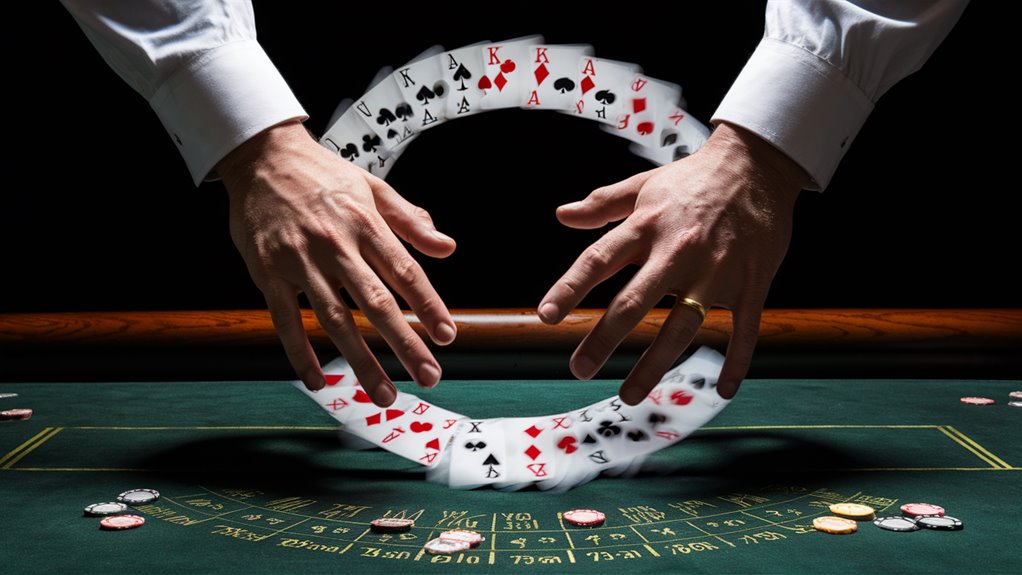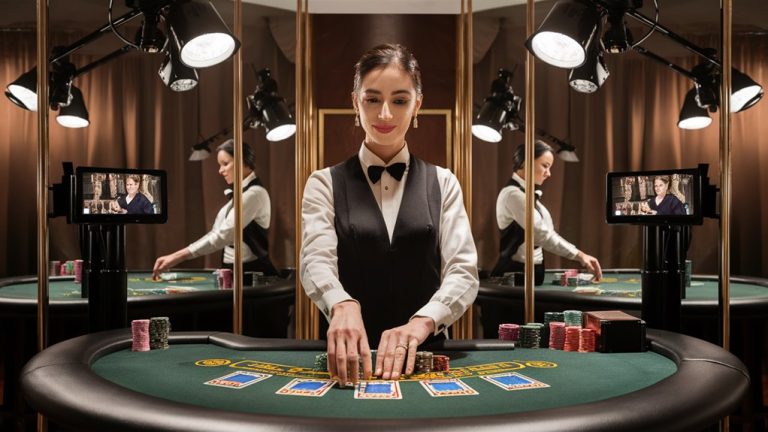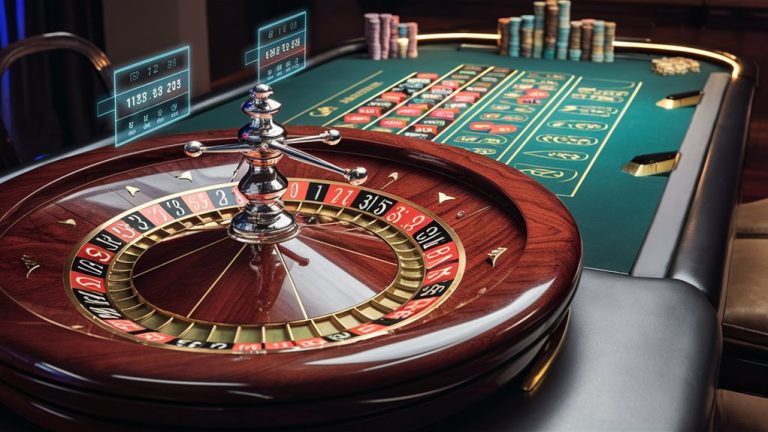
Flicker & Rush Blackjack: The Evolution of Gaming Technology
At the time of its introduction, the technique definitively rejected many traditional gaming constraints. By Huang Hsin-yi, staff reporter in Taichung. Starting in 1987, when Marcus Henderson unveiled his original dealing method, it questioned time-honored conventions of dealer mechanics and customer interaction. Henderson’s method is built on the theory of neural response optimization. By clever means, a proportion of one transfers everyday nervous energy into exact, controlled dealing motions. In this way, it creates a new blackjack dealing efficiency benchmark. This systematic approach harmonizes the dealer rhythm with player expectation, making for a more pleasant gaming experience. The technique also amounts to a revolution above and beyond mere dealing speed. Flicker & Rush alters global professional dealing standards by including advanced neuromuscular patterns. This makes for more sophisticated worker schedules and reduces turnaround time for casinos with lots of sellers. The trick is to integrate dealer movements with natural cognitive processes, thus to achieve real speed and accuracy at once. Advanced dealers who master Flicker & Rush demonstrate significantly enhanced performance metrics, including:
- Increased hand-per-hour rates
- Improved dealing accuracy
- Enhanced player engagement
- Charged Table Energy
In modern casino operations, this scientific system of blackjack dealing has become an essential part, establishing that innovation in traditional card games is still evolving through a knowledge of the brain and its relationship to power and speed.
The Origins of Flicker & Rush
The Origins and Evolution of Flicker & Rush: Vegas’s High-Speed Casino Sensation
The Birth of a Revolutionary Casino Game
By successfully transforming its natural hand-tics into a revolutionary dealing method, professional blackjack expert Marcus “The Flash” Henderson made 1987 history. This innovative approach would lay the groundwork for one of Las Vegas’s most exciting table games.
Innovation Meets Casino Gaming
Henderson presented his concept to the Golden Nugget Casino – a high-velocity new blackjack variant that obliges dealers to complete hands within an unprecedented seven-second period.
Although at first people were very doubtful about the game, its video-game atmosphere and the frequent visits it ensured from tourists and punters proved its merit again and again in test runs.
The Rise of Flicker & Rush
Two key elements give the game its name: the rhythmic way cards are dealt, throwing out ever new moving images, and the split-second decisions that players experience as sensory-adrenaline rushes as they win or lose.
By 1989, Flicker & Rush had expanded to six major casino properties, raising blackjack pit traffic by an eye-popping 47%.
Modern Gaming Excellence
Today’s F&R dealers have to go through many months of hard training only to acquire a level of speed and precision that can make them successful at this fast-paced game.
Technique plus Time Pressure plus Speed Wall — this is what Flicker & Rush features at a live game.
Mastering Micro-Movement Mechanics
Mastering Micro-Movement Mechanics in Card Dealing
Fundamental Hand Positioning
When you have achieved perfect card control, you just have to find the best hand position for dealing — then start to deal! Put your thumb and index finger straight on top of those deck edges, which protrude past their playing cards to form an all-essential “flick zone”: this tiny area is where cards can slide freely with very little resistance.
The best position at 15 degrees means that you get rid of much friction, yet the hands themselves are still close enough for rapid-play dealing!
Advanced Movement Techniques
Professional-grade dealing is based on digit independent control — proper finger mechanics mean that certain fingers must relax while others tighten. This precise finger isolation underpins the focus on technique.
By using this advanced technique to achieve uniformity, dealers can still retain authority in dealing every single card and yet keep their speed levels high.
Optimizing Deal Path Efficiency
The Rush element necessitates the most efficient paths for delivering cards. Create the most exact arc to deal in that greatly reduces hand travel-time between player positions.
Keep the elbow in and use your forearm as an anchor point to maintain the same dealing mechanics.
This condenses the dealing method.
Progressive Training Plan
To develop indestructible muscle memory, practice step-by-step.
- Card Precision — Start single-card precision drills at 50% speed
- Try to hit all releases of the 먹튀검증 토토사이트 cards correctly and cleanly. Do not force it.
- Perfect placement accuracy before increasing speed
The last step in the progressive training technique is to gradually increase speed and maintain mechanical precision.
To make sure that our approach doesn’t slide demonstrably in technique norms throughout tireless repetition.
Application at the Card Table
This systematic approach consolidates the mechanics of card dealing, converting these basic methods into expert-level card manipulation sequences.
Natural Camouflage
Natural Body Language: Just Having a Good Time
Fluid Movement Pattern Mastery
In recreational gaming, success essentially depends on maintaining a natural, fluid style. The method that works best is to enter your physical rhythm into the pace and flow of the game itself.
Furthermore, when making strategic decisions, you must show by your movements that it is real action — an engaged recreational player has just counted out the cards and created them.
Advanced Body Language Skills
Authentic play dynamics are felt by small variations in timing and motion.
Strategic pauses and deliberate displays of enthusiasm match typical recreational player behavior forms.
Principal physical elements include:
- Maintaining relaxed shoulders
- Easy, natural breathing patterns
- Not remaining set in rigid or tense postures
Decentralized Performance Unification
Success for consistency in natural play is illustrated here in the seamless unity of various movements.
Make sure that all hand movements are healthy in their execution; keep up a style that looks confident but relaxed, just as good activity blends well with recreation.

Owning It, Fully
Employing a combination of skill and simple pleasures, strategic precision invites us to look to the future.
Practice synchronizing your body movement with that of recreational gaming as a DB with being freely controlled.
The final goal is to develop game quality that is indistinguishable from other participants in the same activity we all share because every piece of recreational gaming is fresh and engaging.
Speed-Based Decision Making
- By which means can you develop quick recognition? Here is a quick start guide. First off, a crucial step is to get to know yourself better.
- Neural pathway optimization starts with dedicated practice in fundamental recognition skills. For example, a player needs to be as alert to the meaning of an opponent’s actions in late position as he is to seeing some particularly aggressive play from someone behind him.
- Advanced players need to develop the ability to instantly detect micro-expressions and subtle physical tells.
- Concentrate your practice mainly on identifying key indicators at the:
- Orbital muscle movements
- Hand positioning and finger tension
- Shifts in shoulder alignment
Precision Timing Training
- Speed-based decision-making training requires regular practice with a 120 BPM metronome. Employing this gives us the right kind of approach to developing split-second architecture under high pressure.
- Key training elements include:
- Decision-making one beat at a time
- Video analysis of mannerisms after the fact
- Elimination of the stimulus causing the response
Advanced Pressure Adaptation
- Neural response conditioning must encompass environmental stress factors to build truly resilient competitive stamina:
- Timed decision protocols — How long does it take?
- Ambient distraction training — short but sweet!
- Instruction With The Ring On Its Proverbial Finger
- Track your own neural response development against quantifiable metrics:
- Initial baseline: 2-second decision window
- Incremental improvement measurements
- Sub-second response target
Then protocols to develop or maintain accuracy continue the experiment for further light-years around you. Advanced practitioners should keep detailed logs of their improvement while gradually reducing reaction times without losing quality in decision-making.
Legal And Competitive Implications
- Legal and Competitive Implications of Neural Response Training
- Understanding Casino Regulations and Player Rights
- When practicing neural response conditioning, don’t let the gaming rooms give you a hard time for no good reason! Gaming establishments’ power to prohibit players employing systematic methods of mental conditioning is upheld even though they themselves are under no similar constraint to improve general morality.
- Gaming venues often watch for irregular betting patterns or people who make decisions with the frequency of blinking eyelids in any one hand. Those players may have had formal training.
- Venue-Specific Regulatory Processes
- Casino regulations vary greatly between different establishments, and such differences dictate a thorough review of the applicable standards prior to practice.
- Although the majority of gambling rooms strictly forbid it, electronic devices and clockwork assistances, including even mind-training methods, attract benign acceptance from these institutions as “naturally developed abilities”.
It’s really important to have a complete training method manual to protect yourself against potential inquiry.
Tournament Laws And Disclosure Standards
However, in competitive gaming as a rule, the restrictions are imposed on physical counting devices rather than the trained mental acuity of Gaming Experience players. However, according to tournament rules, if asked, it can be necessary to disclose which special training methods you have been using.
The best path involves:
- Clear documentation of training practices
- Discreet use of specific methods such as technique
- Balanced customization of enhanced content being offered
- Easy integration into venue-specific policies with professionalism top of mind
Players need to calibrate their learned advantages carefully. If they do not moderate by gaming accounts sending a polite message or two, things are likely to happen.



